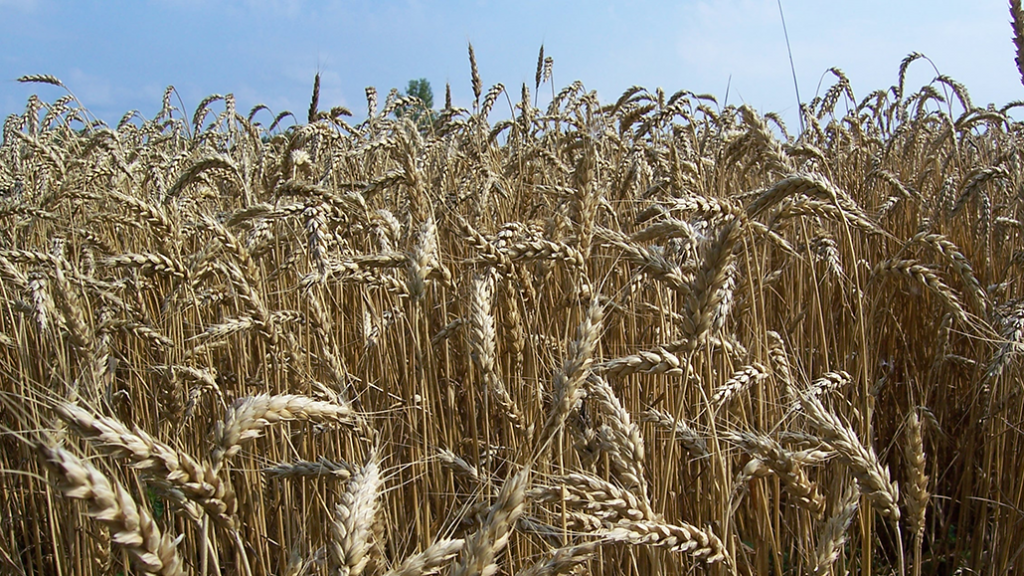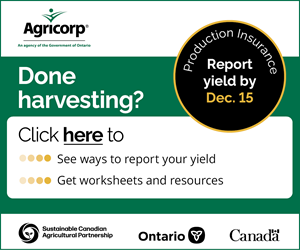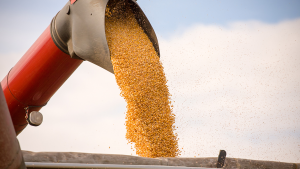Rising quality, falling numbers
NEW STANDARDS

IN THIS DAY and age, consumers are demanding higher quality products and it is having a ripple effect right down to the farm gate.
As a grain merchant who works with both farmers and buyers, I think it would be beneficial for everyone along the supply chain to pay attention, understand those demands, and communicate with one another about how best to meet them.
Remember back a couple of decades ago when you could open box of crackers or cookies and some of them would be broken? Or you bought bread, and there was a gigantic air hole in the top of the loaf? Now, consumers are demanding better quality and better looking food products than this.
What’s happening in the grain industry is that we’re starting to see the market develop specifications for our commodities outside our normal grading system.
For example, while the Canadian Grain Commission’s (CGC) system for wheat grading has been in place for decades, there is a widening gap between these standards and the standards now being demanded by the milling, export and baking industries.
The CGC’s method relies heavily on visual inspection — looking for sprouted or damaged kernels.
In contrast, flour millers and exporters use the falling number test, which measures the activity of an enzyme that can adversely affect the quality of the grain for milling. This, in turn, results in poorer quality baked goods like crumbled crackers or holey bread. Lower falling numbers mean lower quality flour.
This year, the gap between the two grading methods caused significant problems for wheat growers in some regions of the province, affecting not only downgrading and lower prices but also the rejection of entire loads.
COMMUNICATION
The way I see it, there’s also a gap in communications up and down the supply chain. Farmers grow to produce the highest yield, as they should. But markets are starting to push back, asking farmers to do something a little outside the normal practices.
I get a lot of questions from farmers about the testing and whether it’s fair. My answer is that if we’re growing a product, then unfortunately, the market we’re selling into is in charge. The companies using the product need to be confident that it meets their standards.
Having said that, there needs to be balance in terms of what is expected by buyers, who don’t experience the challenges of dealing with weather, pests, diseases, planting and harvest timing and dozens of other factors that go into growing a wheat crop.
For example, buyers are pushing for farmers to harvest wheat earlier to avoid sprouting, but there’s no premium paid for the extra work that is involved — including possibly having to dry wet grain to get to the specifications demanded.
At the end of the day, there needs to be a better relationship between buyers and growers. Both sides need to understand the needs of the other and work out how to accommodate these needs or reconcile their differences.
We don’t want to have a repeat of this season, in which growers in some regions were getting 20 to 30 per cent of their wheat loads downgraded. While weather was definitely a factor, we also saw loads that came from three kilometres away from one another — one perfectly fine and the other rejected.
There are so many variables that this won’t be an easy problem to solve. I do know that getting into a “blame game” won’t be productive.
From my perspective, it would be good for buyers and growers to spend a little time reaching out to one another and learning about the other’s needs.
We’re going to have to feed a world whose population is growing exponentially. To do that, we need to work together.
Let’s start the conversation.
Jeff Robinson is a grain merchandiser at Woodrill Farms Ltd. The opinions expressed in this commentary are his own. •
PROCEDURES FROM THE FALLING NUMBER TEST
The falling number test is used to evaluate the amount of sprout damage in Canadian wheats. Alpha-amylase is an enzyme found in sprout-damaged wheat. If germination occurs there is a dramatic increase of this enzyme.
The falling number is the time in seconds for a stirrer to fall through a hot slurry of ground wheat. The greater the amount of alpha-amylase in the wheat, the thinner the gelatinized starch paste and the faster the plunger will fall through the slurry. A high falling number or the longer it takes the stirrer to fall indicates the wheat is sound and satisfactory for most baking processes.
Source: Canadian Grain Commission
























